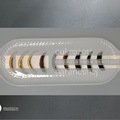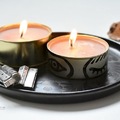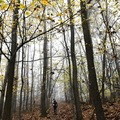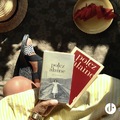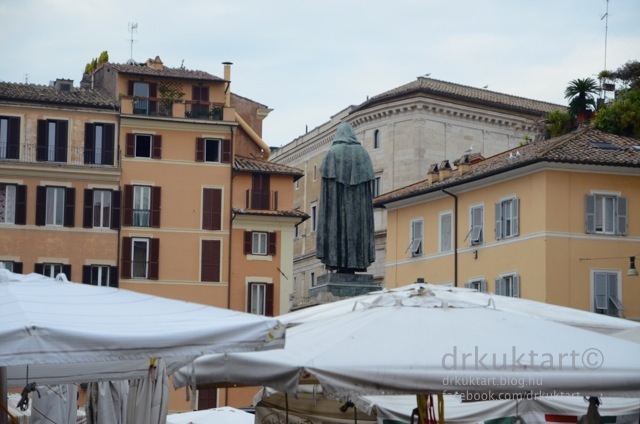
Rómában járva mondhatni kötelező látnivaló a Campo de' Fiori. Hangulatos piactér kegyetlen történelemmel. Kövessetek.
If you stay in Rome, Campo de' Fiori is definitely a must-see. Cosy marketplace with cruel history. Follow me.
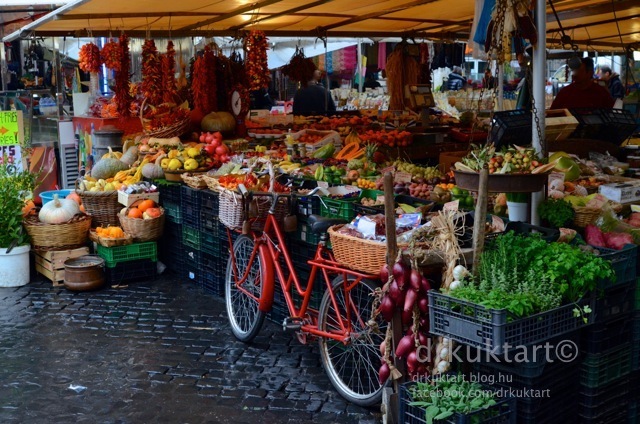
Virágos terület. Ezt jelenti magyarul az olasz Campo de' Fiori elnevezés, ami még a középkorból származik, amikor is a területen kaszáló nyúlt el.
Then name of Campo de' Fiori, translated from Italian, means "field of flowers". It is named in the Middle Ages when the area was actually a meadow.
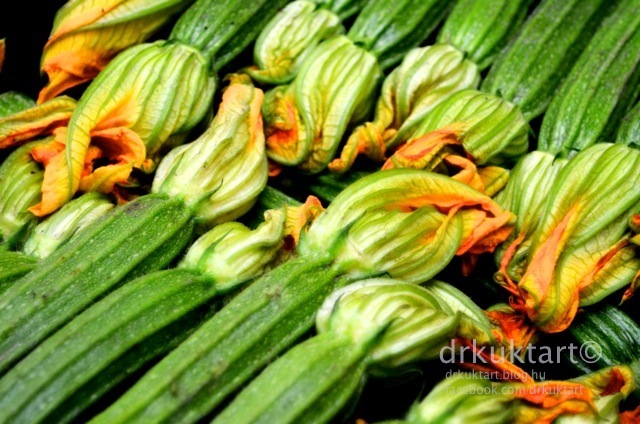
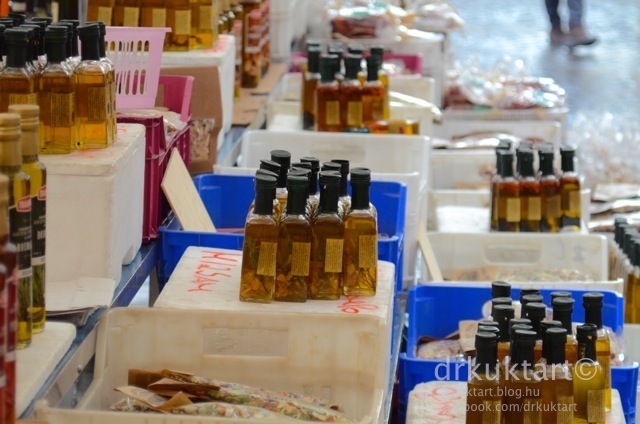
Az ősi Rómában a Campo de' Fiorinak ma otthont adó terület kihasználatlan volt a Pompeii Színház és a Tiber árterülete között. Habár az Orsini család a mai tér szomszédságában telepedtek le a XIII. században, a XV. századig ennek a résznek nem volt különösebb funkciója. A tér közvetlen szomszédságában IX. Bonifác pápa uralma alatt épült az első - Santa Brigida a Campo de' Fiori névre keresztelt - templom, míg III. Kallixtusz pápa uralma alatt, 1456-ban, a Parione városnegyed fejlesztése során Ludovico Cardinal Trevisani kővel burkolta magát a teret is. Erre az időszakra datálható a téren álló Orsini Palota átépítése is.
'In Ancient Rome the area was unused space between Pompey's Theatre and the flood-prone Tiber. Though the Orsini established themselves on the south flank of the space in the 13th century, until the 15th century the square remained undeveloped. The first church in the immediate vicinity was built during the pontificate of Boniface IX (1389-1404), Santa Brigida a Campo de' Fiori; (…) In 1456 under Pope Callixtus III, Ludovico Cardinal Trevisani paved the area: This was part of a greater project of improvement of the rione Parione. This renewal was both the result and cause of several important buildings being built in the surroundings; in particular, the Orsini palace on Campo de' Fiori was rebuilt.' (Reference here.)
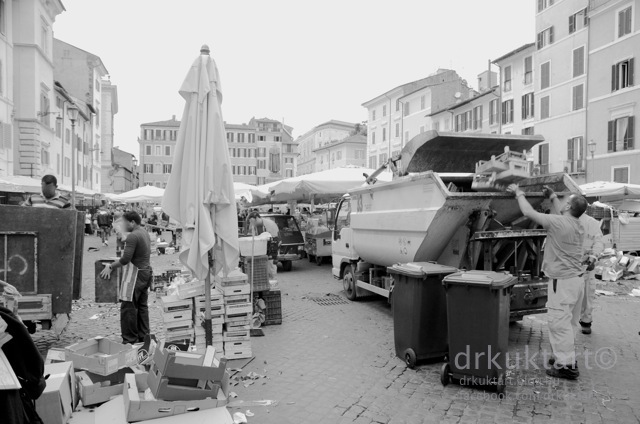
A Campo de' Fiori, mint tér és mint egész nem építészek tervezőasztalán született, az élet és a történelem alakította olyanná, aminek ma is ismerjük. A teret övező utcák nevei a tér kereskedelmi központ jellegére utalnak: Via dei Balestrari (számszeríjkészítők), Via dei Baullari (ládakészítők), Via dei Cappellari (kalapkészítők), Via dei Chiavari (kulcskészítők) és Via dei Giubbonari (szabók). IV. Sixtus pápa új utcákat építtetett - Via Florea és Via Pellegrino -, amelynek köszönhetően a tér a Pápa útjának (Via papale) szerves részévé vált ezzel elhozva a jólétet a terület számára: a piacon hetente kétszer (hétfőn és szombaton) virágzó lóvásárt tartottak, míg körülötte fokozatosan egyre több fogadó, hotel és bolt épült. Mindezek közül a leghíresebb fogadó a Tehenek fogadója (Taverna della Vacca) volt, amely jelenleg is megtalálható a tér dél-nyugati sarkánál a Via de' Capellari torkánál. Ez a fogadó, az épületen jelenleg is látható jelzés által is tanúsítottan, Vannozza dei Cattanei tulajdonában állt, aki a későbbi VI. Sándor pápa legismertebb szeretője volt.
'Campo de' Fiori has never been architecturally formalized. The square has always remained a focus for commercial and street culture: the surrounding streets are named for trades - Via dei Balestrari (crossbow-makers), Via dei Baullari (coffer-makers), Via dei Cappellari (hat-makers), Via dei Chiavari (key-makers) and Via dei Giubbonari (tailors). With new access streets installed by Sixtus IV - Via Florea and Via Pellegrino - the square became a part of the Via papale ("Pope's road"), (…). This brought wealth to the area: A flourishing horse market took place twice a week (Monday and Saturday) and a lot of inns, hotels and shops came to be situated in Campo de' Fiori. The most famous of them, the "Taverna della Vacca" ("cow's Inn") still stands at the south west corner of the square, at the begin of Via de' Cappellari, and belonged to Vannozza dei Cattanei, the most famous lover of Alexander VI Borgia, whose family seal is still on display on the house facade.' (Reference here.)
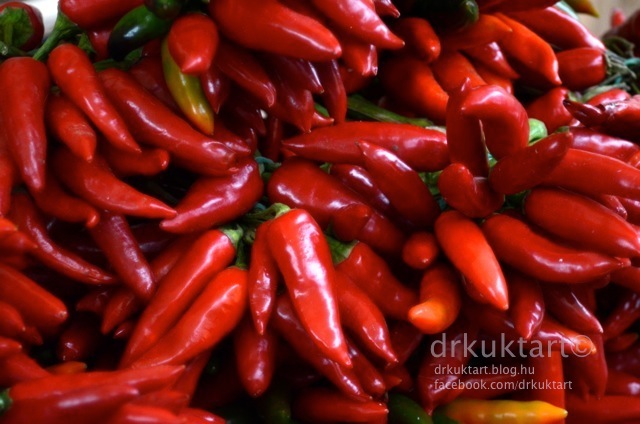
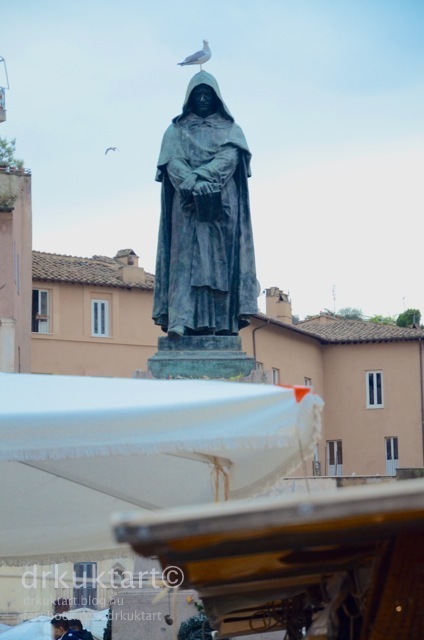
A Campo de' Fiori korábban a nyilvános kivégzések helyszíne is volt. 1600. február 17-én - 7 év pereskedést követően - Giordano Bruno olasz dominikánus szerzetest és filozófust itt égették meg élve, miután eretnekség vádjában bűnösnek ítélték. Az eretneknek bélyegzett filozófus valamennyi munkája a tiltott könyvek listájára került. A kivégzett filozófus emlékére készült Ettore Ferrari szobra, amelyet a Vatikán irányába, de azzal szemben állítottak fel a Campo de' Fiori közepén - pontosan ott, ahol megégették - 1889-ben. 1624-ben pedig Marco Antonio de Dominis teológus és filozófus testét égették meg itt a téren.
'Executions used to be held publicly in Campo de' Fiori. Here, on 17 February 1600, the philosopher Giordano Bruno was burnt alive for heresy, and all of his works were placed on the Index of Forbidden Books by the Holy Office. In 1889 Ettore Ferrari dedicated a monument to him on the exact spot of his death: He stands defiantly facing the Vatican, reinterpreted in the first days of a reunited Italy as a martyr to freedom of thought. The inscription on the base recites: A BRUNO - IL SECOLO DA LUI DIVINATO - QUI DOVE IL ROGO ARSE ("To Bruno - the century predicted by him - here where the fire burned"). The body of theologian and scientist Marco Antonio de Dominis was also burned in this square, in 1624.' (Reference here.)

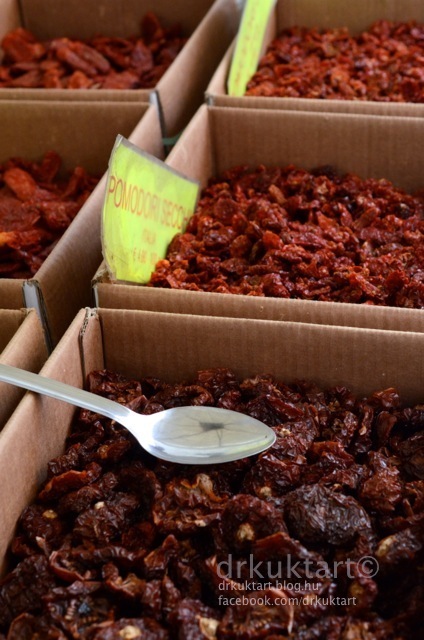
A piac a jelenlegi formájában 1869. óta működik a Campo de' Fiori-n. Ezt megelőzően a piacokat a Navona téren (piazza Navona) tartották.
Since 1869 a daily vegetable and fish market has been held there, which before took place every morning in piazza Navona.
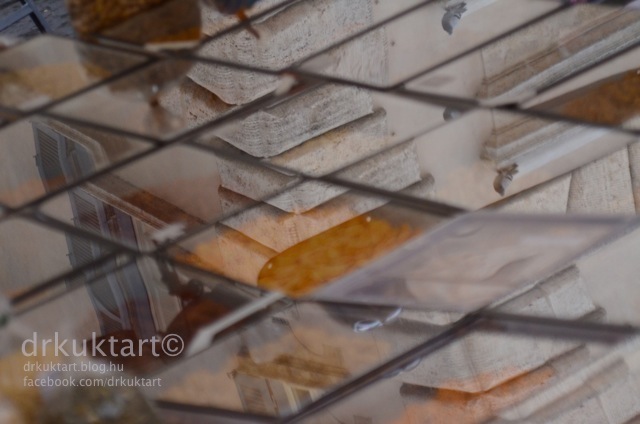
A látvány megtöbbszöröződik a szárazárut rejtő dobozok fényes felületén.
Reflection of surrounding buildings on the boxes.
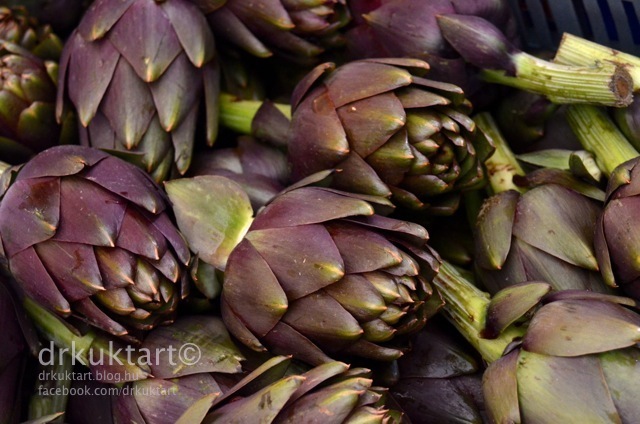
Gazdag a kínálat friss gyümölcsökből és zöldésgekből, a virágokról nem is beszélve.
The market is full with fresh vegetables, fruits and flowers.
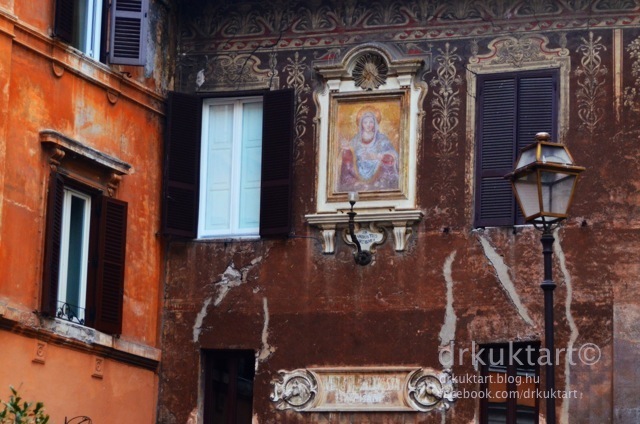
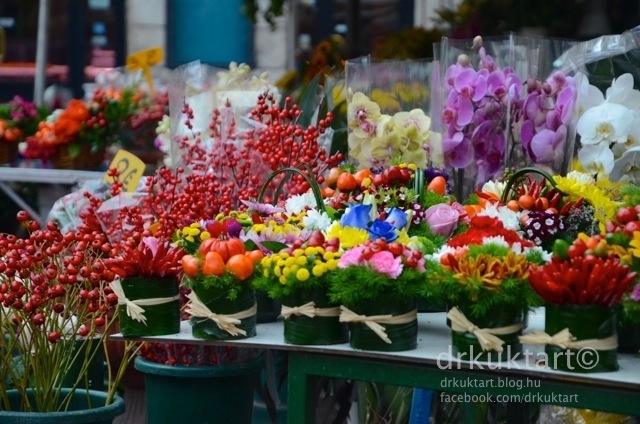
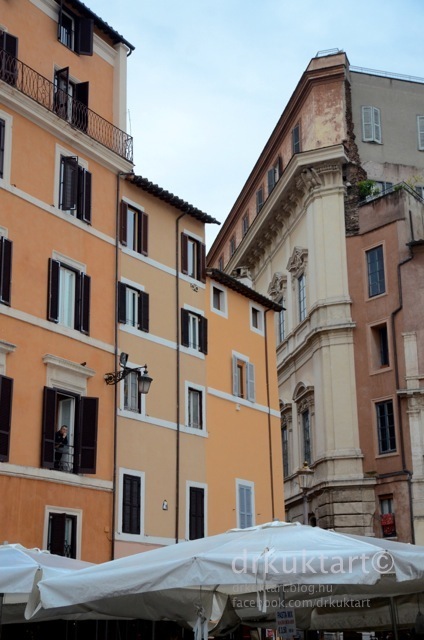
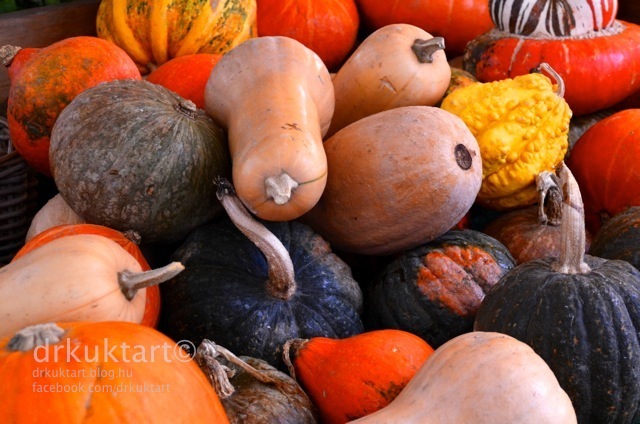
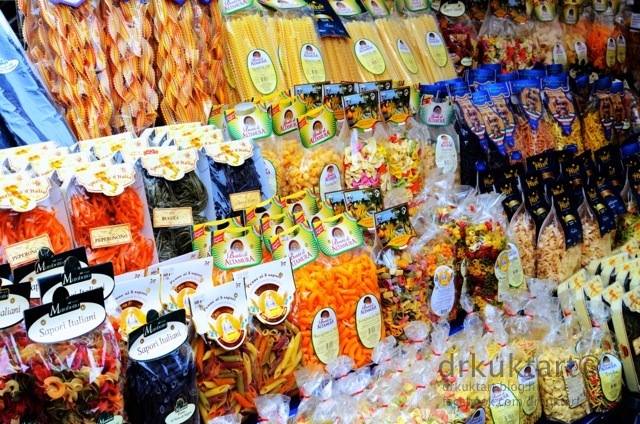

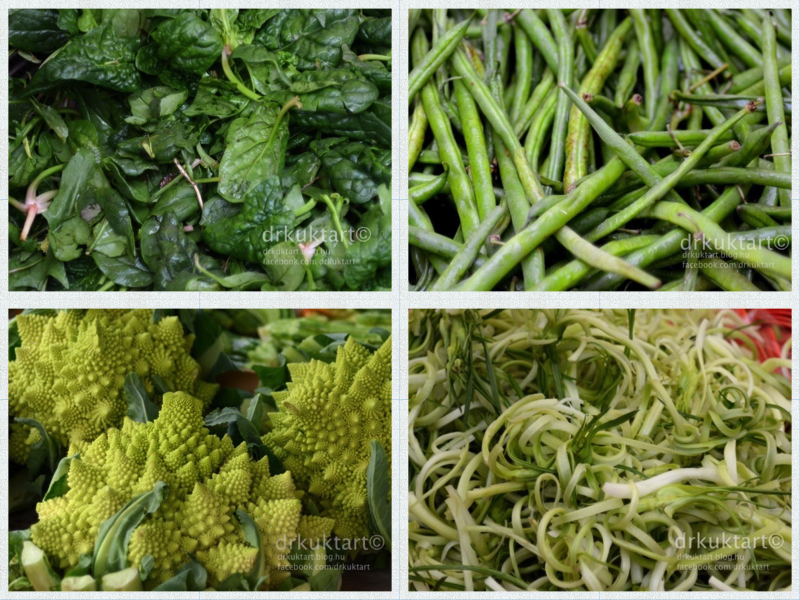
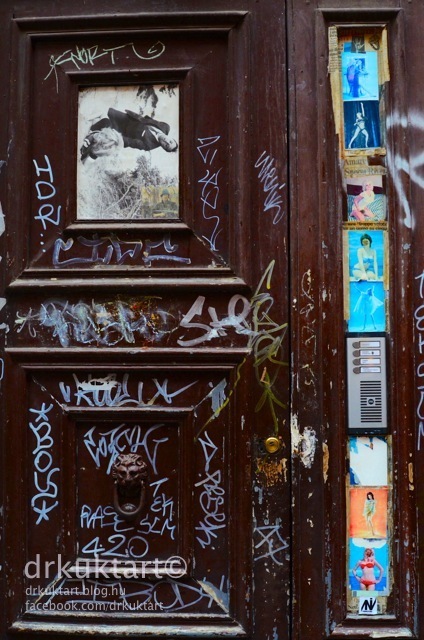
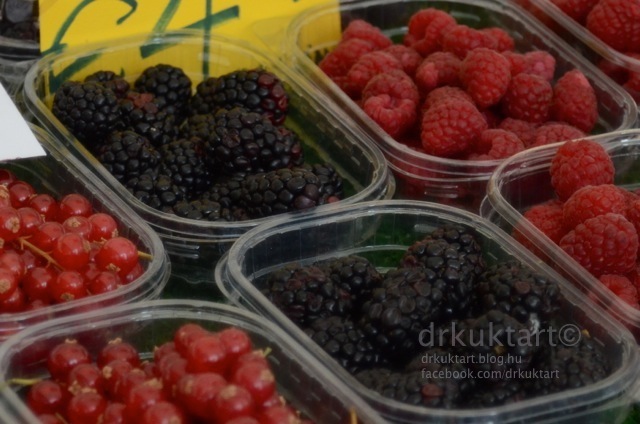
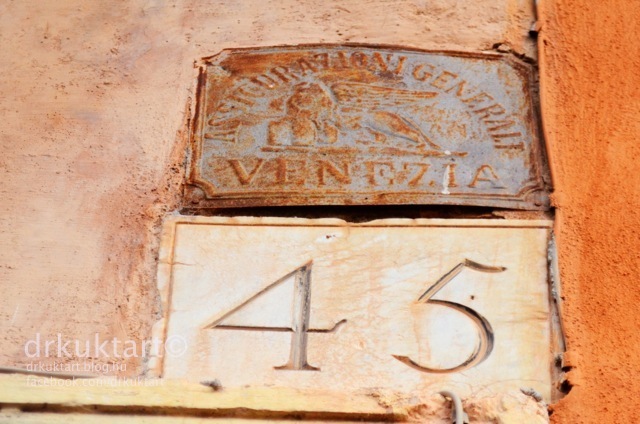
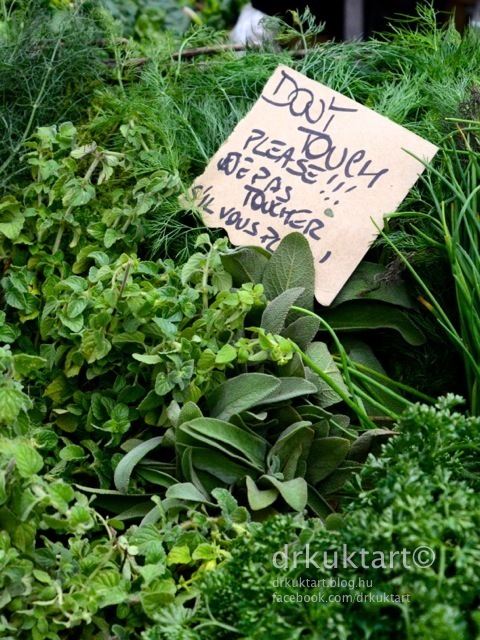
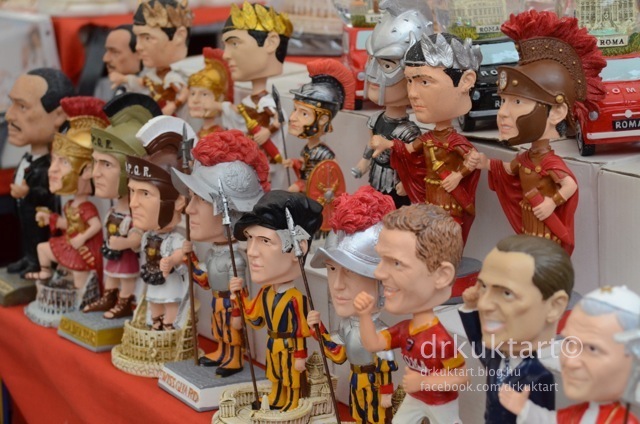
A bóvli sem hiányozhat, de legalább nem delfines.
Cheap gifts from Rome, at least these aren't decorated by dolphins.
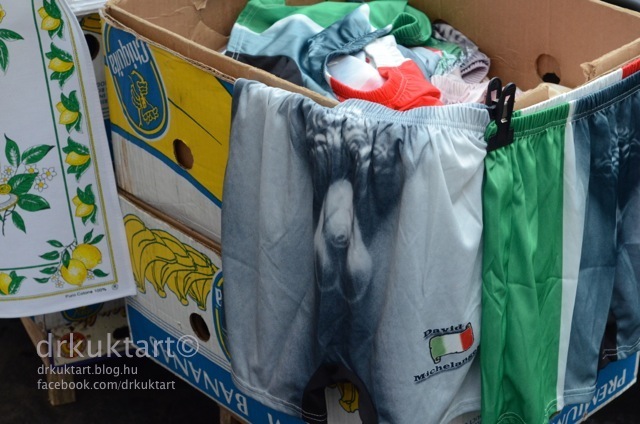
Nyilván Michelangelo is így gondolta. Nyilván nem.
This is how Michelangelo designed it, for sure...
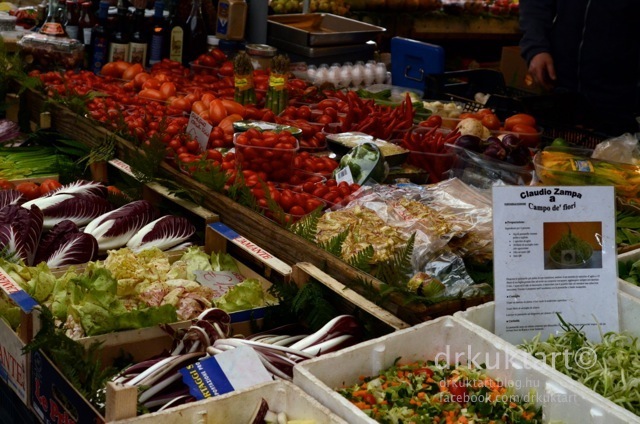
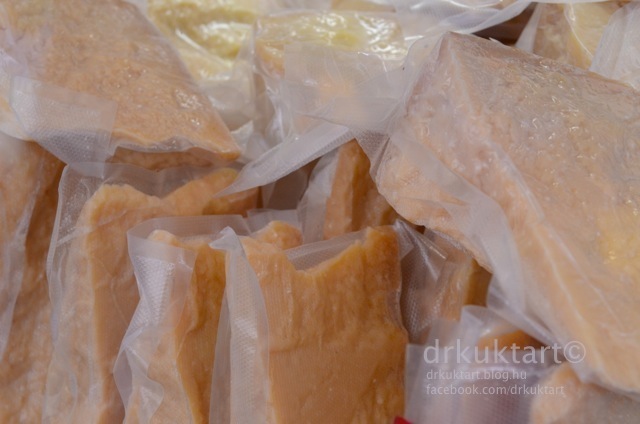
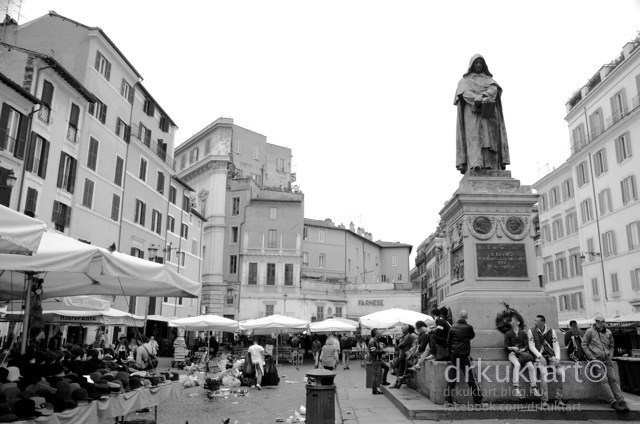
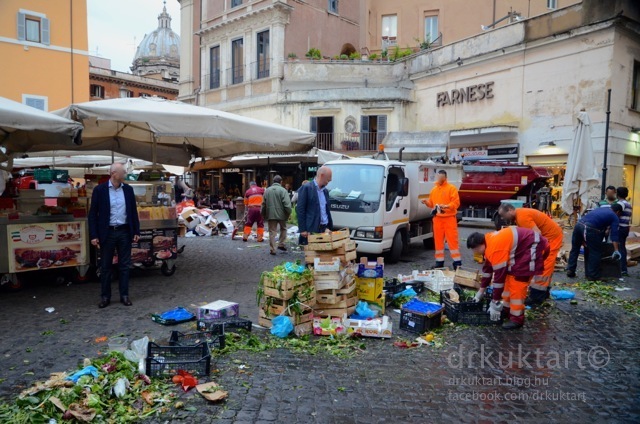
A piac végéhez közeledve a keletkezett szemetet szorgos kezek tüntetik el.
At the end of the market, the trash is collected.
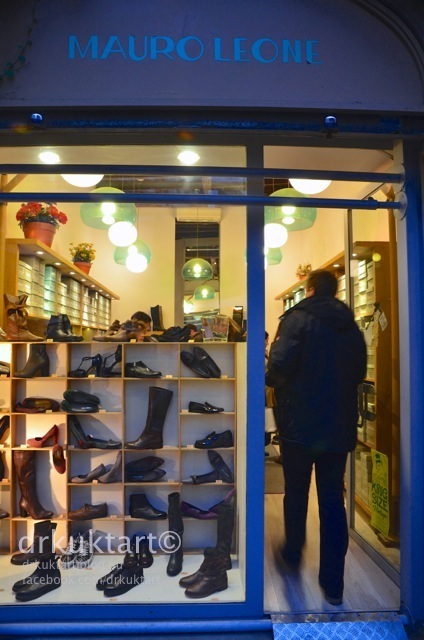
Az egyik kedvenc cipőboltom a Campo de' Fiori tőszomszédságában, mindenre szükségem van innen.
One of my favorite shoe shop in Rome, near by Campo de' Fiori.
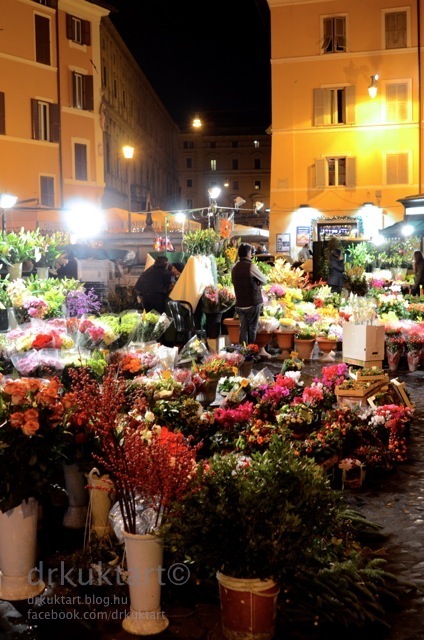
Estére a nappali árusoknak nyomát sem látni, a szemét is eltűnik a térről, egyedül a virágárusok árulnak tovább rendületlenül. Azonban a tér ekkor sem válik teljesen kihalttá, a folyamatos nyűzsgésről a turisták és a rómaik, míg a betevőről a környező éttermek és pékségek gondoskodnak.
All stalls disappear after the market time, except the stalls of florists The surrounding restaurants and bakeries appeal to tourist.
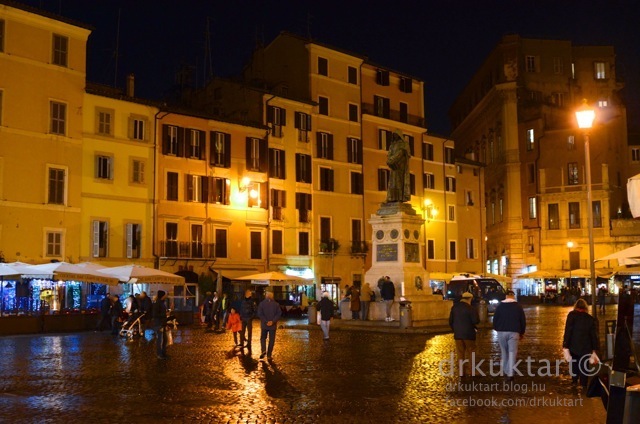
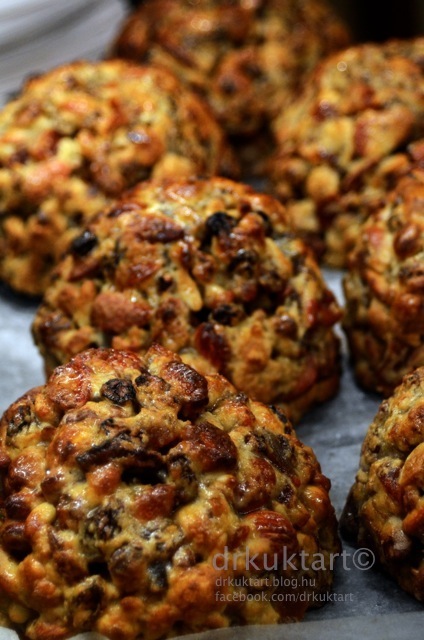
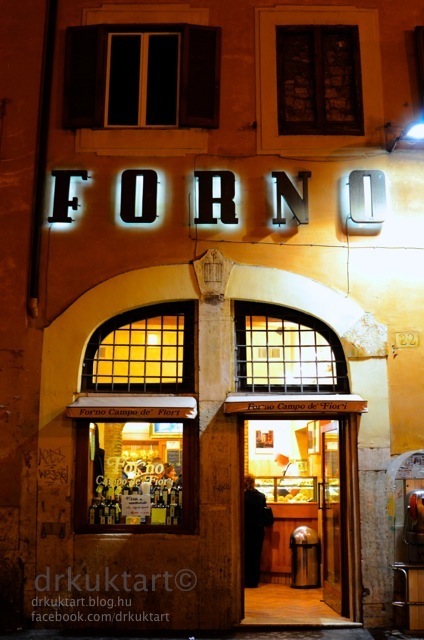
Ha érdekel a sorozat többi része is, elárulom, hogy Spanyolországban eddig a Valenciai nagyvásárcsarnokba és a Barcelonai központi csarnokba lestem be, míg Budapesten a Fővám téri Nagycsarnokban, a Rákóczi téri vásárcsarnokban, a Hold utcában található vásárcsarnokban és a Hunyadi téri vásárcsarnokban jártam, a Klauzál téren található csarnokot pedig jól megkörnyékeztem.
Ha tetszett a bejegyzés, kövess Facebook-on ITT és Instagram-on ITT.
Szép napot kívánok!
If you are interested in the other posts of my market-series then check the markets what I have already visited: the Central Market of Valencia and Central Market of Barcelona" in Spain. In Budapest: the Central Market Hall of Budapest, the Market Hall on Rákóczi square (Rákóczi tér), the Market Hall in Hold street (Hold utca), the Market Hall on Hunyadi square (Hunyadi tér) and the Market Hall on Klauzál square (Klauzál tér).
If you like this post, follow me on Facebook HERE or Instagram HERE.
Have a nice day!
DRKUKTA
